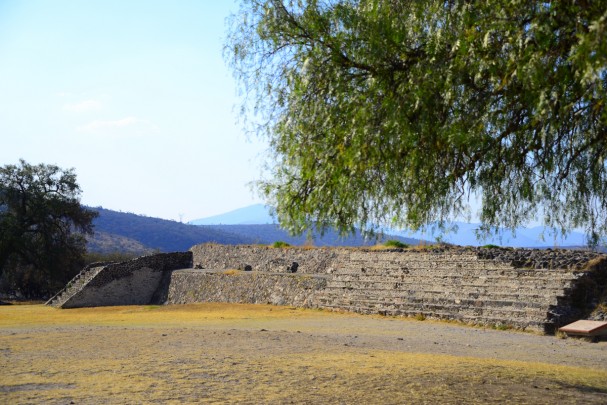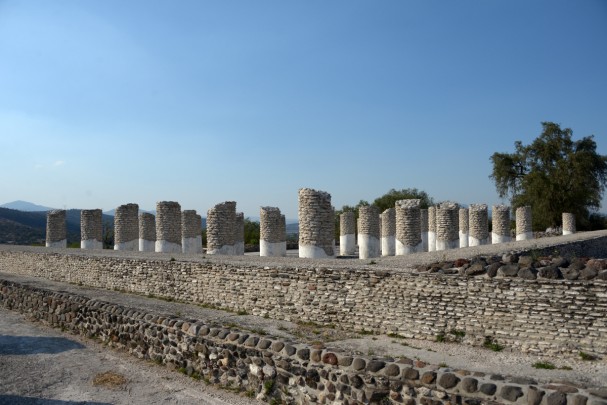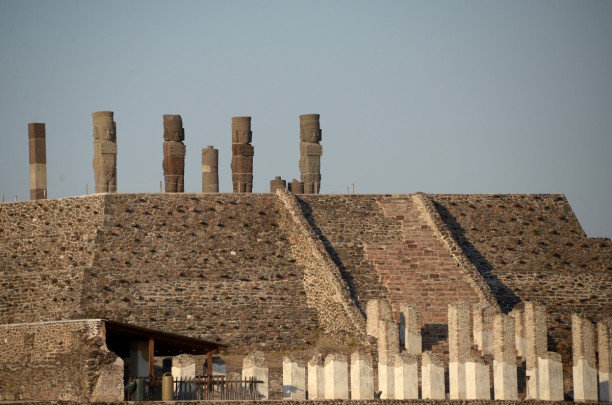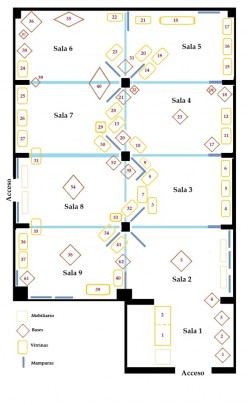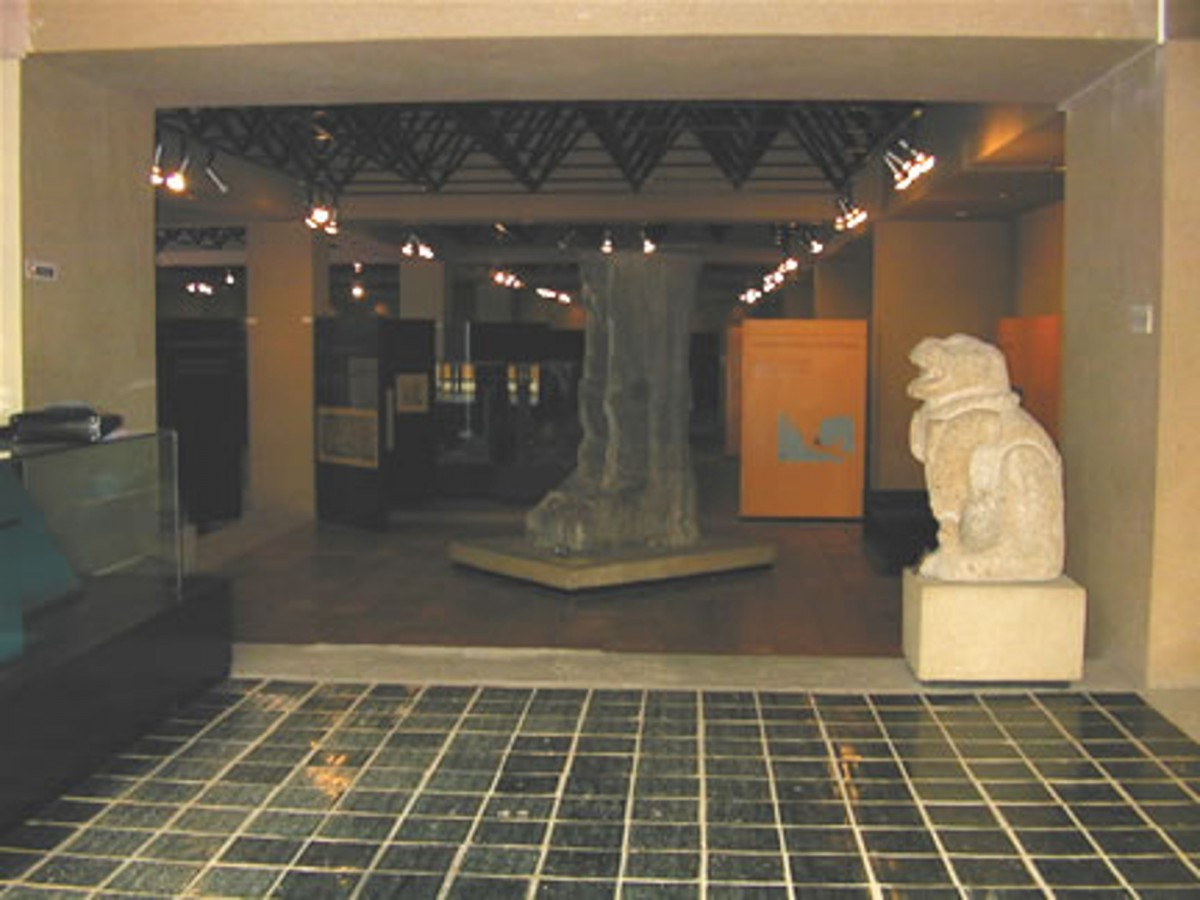The Jorge R. Acosta Museum was inaugurated on November 16, 1982. It is named after the principal archeologist who led the project from 1939 until 1960 in the area of the monuments known as the Tula Archeological Zone and revealed the main buildings and pyramid-like structures that are now open to the public, such as Ballcourt 1, the Coatepantli ("Wall of Snakes"), Pyramid B, the Palacio Quemado ("Burned Palace"), Pyramid C, and the central altar of Tula Grande’s plaza.
The exhibits in the museum are divided into nine thematic spaces that examine the site’s cultural history. It shows a range of artefacts made out of everything from ceramic, bone, shell, and obsidian, to basalt rock and stone. Most of these objects were discovered by Jorge R. Acosta himself during his work on Tula Grande. (Figure 1. Map of the Museum, showing the number of galleries and the layout of displays, information boards and platforms).
There are also objects found during various explorations carried out by other Mexican archeologists, including Eduardo Matos Moctezuma, Roberto Gallegos, Juan Yadeum, Guadalupe Mastache, Alejandro Pastrana, Enrique Fernández, Susana Gómez Serafín, and Blanca Paredes. Other items were discovered by US researchers working on projects, led by Richard Diehl, Robert H. Cobean and Dan Healan, among others.

